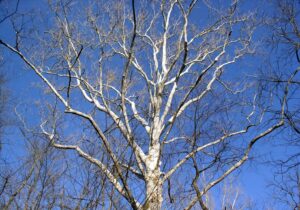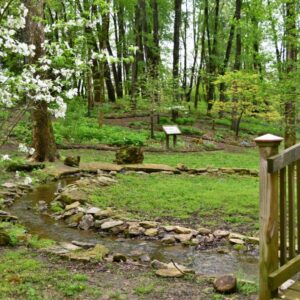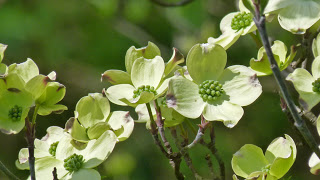 |
| Dogwood Blossoms |
Robert Green of Greenhaven Tree Service joined us for our Trees Open House Saturday, and everyone had a wonderful time learning about the individual trees at the Nature Preserve. The trees we visited were familiar, but we learned new things about many of them.
 |
| Hackberry Bark |
For example, the knobby hackberry tree shows growth in the layers of its bark. You don’t have to cut down this tree and count the rings to know how old it is. The layers look like sedimentary rock to me. The hackberry emperor butterfly depends on this tree as well.
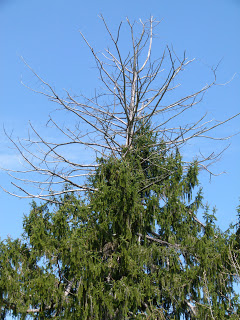 |
| Norwegian spruce |
People often ask why we don’t trim or remove this large Norwegian spruce next to the Field House. Tavia immediately says that the birds all enjoy perching on the bare branches at the top, and we enjoy being able to see them there! The rest of the tree is perfectly healthy, so let’s not do anything to it.
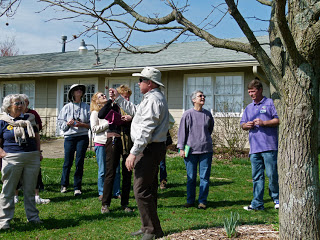 |
| Robert Green and sweet gum tree |
Next time you walk down the Arboretum, notice the variety of trees there. The large one on the left has enormous compound leaves in the summer and huge seed pods in the fall. It’s the famed Kentucky Coffee tree, the official historical tree of the state. It isn’t the state tree, because that honor goes to the tulip poplar (also referred to as yellow poplar, tuliptree, tulip-poplar, white-poplar, or whitewood), which isn’t a poplar tree at all!
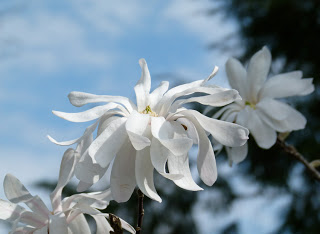 |
| Star Magnolia |
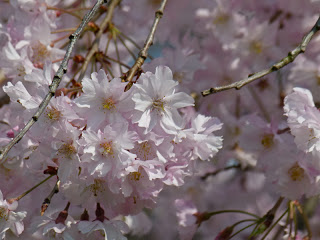 |
| Weeping Cherry |
 |
| Red Maple |
All deciduous trees (those that lose their leaves in the fall) are flowering trees. Sometimes the flowers are large and fragrant, such as the magnolia and weeping cherry blossoms above. Other trees have small easily unnoticed blossoms, like this red maple (unnoticed except for those who are allergic to their pollen). All are essential for the tree to have fruit, whether fruit we can eat, or just whirlybird seeds to start little trees in all our flowerbeds.
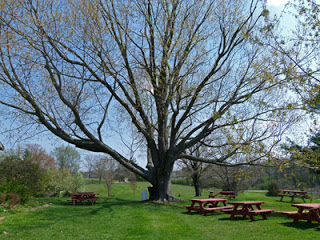 |
| Picnic Maple – 100 years old |
The Creasey Mahan property was a farm, with cattle and horses grazing on open mowed fields, until the Nature Preserve was created in 1968. Most of the trees we now see were not planted until after that time, but we do have a few large trees which we asked Robert to date for us. How old are these big trees? He estimates that the red maple I call the Picnic Tree is about 100 years old.
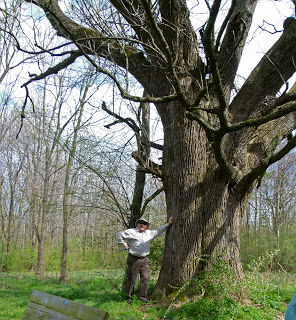 |
| Ash tree – 200 years old |
We walked down the Mahan Lane Trail to its second crossing with the Cross-country Trail, and found the largest ash tree on the property. Robert says this one is about 200 years old.
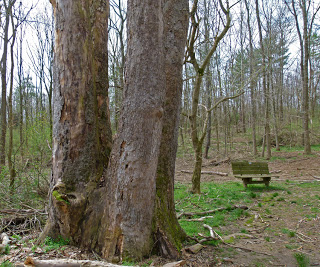 |
| Grandfather Sycamore – 300 years old |
Then we walked back through the Sycamore Crest Trail, on the west side of the preserve. Mike and his crew are digging up the autumn olive and it’s amazing how large this area is when you can actually see it. I call my favorite tree in the Preserve Grandfather sycamore. It really is one tree, but has four large trunks. I should have asked several people to stand at its base and hold hands to show how large it actually is. Robert dated this great ancestor at 300 years of age! Unfortunately, Mike says the tree isn’t in good shape, and much of it is dead. But trees are tenacious. As long as nutrients and water can get up to even one branch, it’s still alive. I still have hope for it!

Wouldn’t it be wonderful if these trees could talk to us and tell us all the history they’ve seen during their lives – the wildlife, Native Americans, the struggle of settlers in the new territories. Now they are endangered by invasive insects and diseases from other parts of the world. History happened right here in Oldham County, and these trees know all about it This tree alone must have a fascinating story about how it came to eat a piece of metal fencing!
Naturally yours,
~denapple












